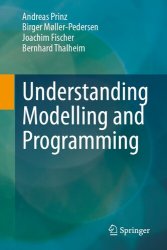 Название: Offensive and Defensive Cyber Security Strategies: Fundamentals, Theory and Practices
Название: Offensive and Defensive Cyber Security Strategies: Fundamentals, Theory and PracticesАвтор: Mariya Ouaissa, Mariyam Ouaissa
Издательство: CRC Press
Серия: Cyber Shorts Series
Год: 2025
Страниц: 116
Язык: английский
Формат: pdf (true), epub, mobi
Размер: 10.1 MB
The aim of this book is to explore the definitions and fundamentals of offensive security versus defensive security and describe the different tools and technologies for protecting against cyber threats. The book offers strategies of practical aspects of cybersecurity, covers the main disciplines needed to understand cybersecurity, and demonstrates ethical and legal concepts of cyber activities. It presents important concepts relevant for cybersecurity strategies, including the concept of cybercrime, cyber defense, protection of IT systems, and analysis of risks.
In cybersecurity, strategies are broadly divided into two categories: offensive and defensive. While both approaches are vital, they offer different perspectives on protecting, detecting, and responding to threats. The key is employing the right strategy at the right time in order to protect against attackers, maintain business continuity in the face of cyberattacks, optimize resources, and adhere to regulatory compliance.
Offensive cybersecurity, commonly called “OffSec,” focuses on actively seeking out systems’ vulnerabilities, flaws, and weaknesses before attackers can exploit them. The premise behind OffSec is simple: to best defend oneself, one must think and act like an attacker. This proactive approach includes strategies like penetration testing (or pentesting), red teaming, phishing simulations, and vulnerability assessments. While offensive cybersecurity aims to identify vulnerabilities by actively simulating cyberattacks, defensive cybersecurity, or “DefSec,” focuses on building and maintaining resilient systems that can prevent, detect, and respond to threats as they arise. This approach emphasizes layers of protection, including firewalls, antivirus software, intrusion detection systems (IDS), intrusion prevention systems (IPS), and incident response teams. The primary goal is to prevent, detect, and mitigate threats.
The aim of this book is to explore the definitions and fundamentals of offensive security and defensive security, and we will also consider the different tools and technologies for protecting against cyber threats. The book offers strategies of practical aspects of cybersecurity and covers the main disciplines needed to understand cybersecurity. The book presents important concepts relevant for cybersecurity strategies, including the concept of cybercrime, cyber defense, protection of IT systems, and analysis of risks.
Penetration test involves simulating cyberattacks to identify vulnerabilities in computer systems. Similar to vulnerability scanners, ethical hackers (or pentesters) conducting these tests simulate real hackers to uncover potential network vulnerabilities. By adopting the perspective of a cybercriminal, they can identify many vulnerabilities that are prime targets. Through penetration test, human security experts can detect vulnerabilities that might evade fully automated tools. As they exploit identified vulnerabilities, they are less likely to produce false positives. Moreover, if they can exploit a vulnerability, cybercriminals could potentially do the same. Additionally, because penetration test is often conducted by thirdparty security services, it tends to uncover vulnerabilities that internal security teams might overlook.
Contents:
Скачать Offensive and Defensive Cyber Security Strategies: Fundamentals, Theory and Practices
[related-news] [/related-news]
Комментарии 0
Комментариев пока нет. Стань первым!
















